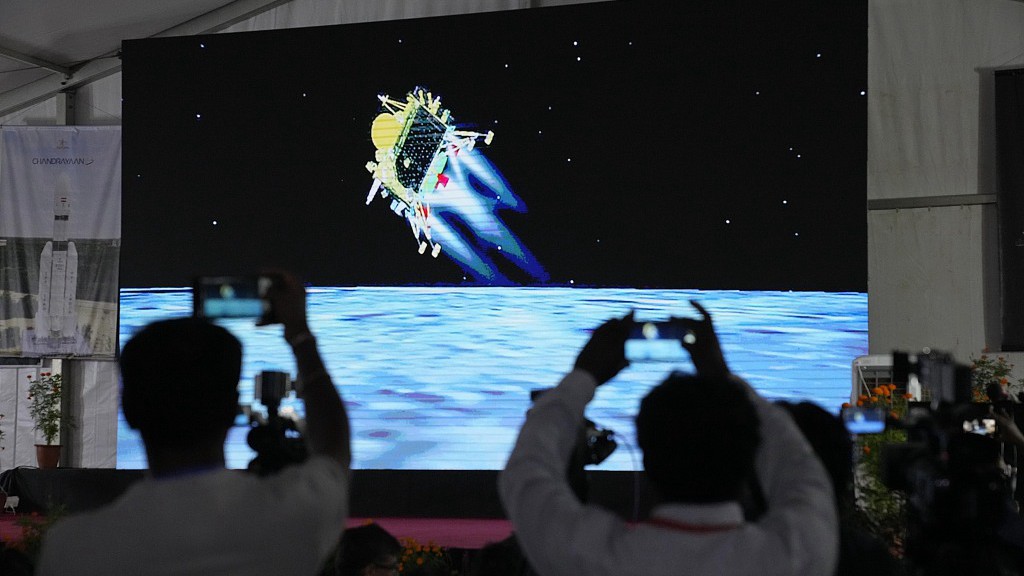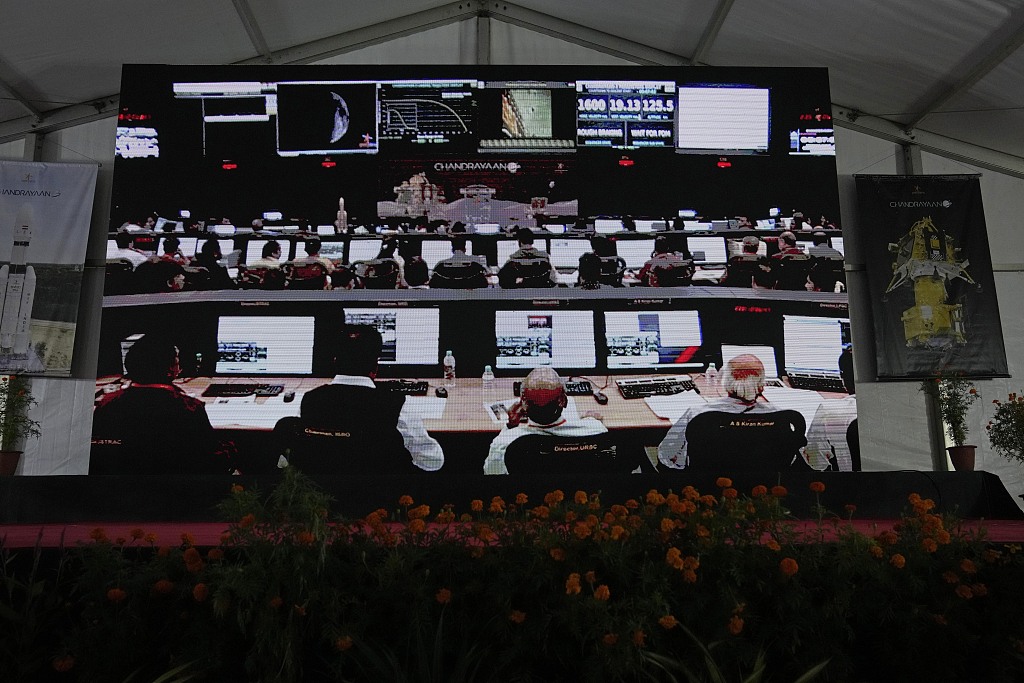
People film the live telecast of the spacecraft Chandrayaan-3 landing on the moon at ISRO's Telemetry, Tracking and Command Network facility in Bengaluru, India, August 23, 2023. /CFP
People film the live telecast of the spacecraft Chandrayaan-3 landing on the moon at ISRO's Telemetry, Tracking and Command Network facility in Bengaluru, India, August 23, 2023. /CFP
India's Chandrayaan-3 spacecraft became the first to make a soft landing on the south pole of the moon on Wednesday, according to the Indian Space Research Organization (ISRO), marking a historic voyage to uncharted territory that scientists believe could hold vital reserves of frozen water.
"This moment is unforgettable. It is phenomenal. This is a victory cry of a new India," said Prime Minister Narendra Modi, who waved the Indian flag as he watched the landing from South Africa where he is attending a BRICS summit, a group that joins Brazil, Russia, India, China and South Africa.
"India is on the moon," said S. Somanath, chief of the ISRO as the Chandrayaan-3 landed.
He said the lunar rover will slide down a flap from the lander within hours or a day and conduct experiments, including an analysis of the mineral composition of the lunar surface.
The mission, which began more than a month ago at an estimated cost of $75 million, is expected to last another two weeks. Somnath said that India would next attempt a manned lunar mission.
Second attempt
Chandrayaan means "moon vehicle" in Hindi and Sanskrit. In 2019, ISRO's Chandrayaan-2 mission successfully deployed an orbiter but its lander crashed.
The Chandrayaan-3 is expected to remain functional for two weeks, running a series of experiments including a spectrometer analysis of the mineral composition of the lunar surface.

ISRO scientists are projected on a screen waiting for the landing of spacecraft Chandrayaan-3 on the moon at ISRO's Telemetry, Tracking and Command Network facility in Bengaluru, India, August 23, 2023. /CFP
ISRO scientists are projected on a screen waiting for the landing of spacecraft Chandrayaan-3 on the moon at ISRO's Telemetry, Tracking and Command Network facility in Bengaluru, India, August 23, 2023. /CFP
Rough terrain makes a south pole landing difficult, but the region's ice could supply fuel, oxygen and drinking water for future missions.
"Landing on the south pole would actually allow India to explore if there is water ice on the moon. And this is very important for cumulative data and science on the geology of the moon," said Carla Filotico, a partner and managing director at consultancy SpaceTec Partners.
India is also planning to launch a mission in September to study the sun, Somanath said. A human space flight is also planned and, while no official date has been announced, preparations are likely to be ready by 2024.
Race to land on the moon
Numerous countries and private companies are racing to successfully land a spacecraft on the lunar surface.
In April, a Japanese company's spacecraft crashed while attempting to land on the moon. An Israeli nonprofit tried to achieve a similar feat in 2019, but its spacecraft was destroyed on impact.
Japan plans to launch a lunar lander to the moon over the weekend as part of an X-ray telescope mission, and two U.S. companies also are vying to put landers on the moon by the end of the year, one of them at the south pole.
In the coming years, NASA plans to land astronauts at the lunar south pole, taking advantage of the frozen water in craters.
Source(s): Reuters
,AP